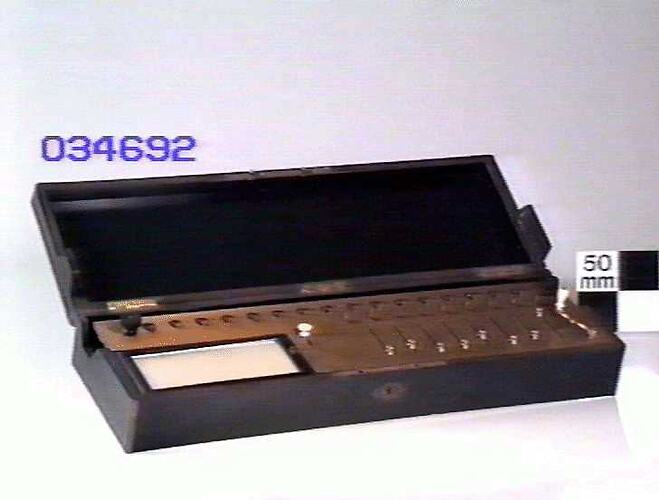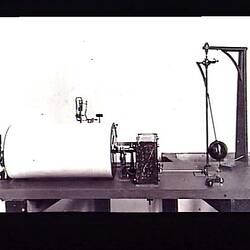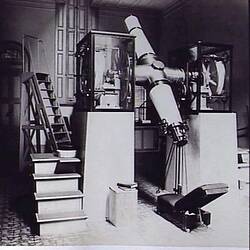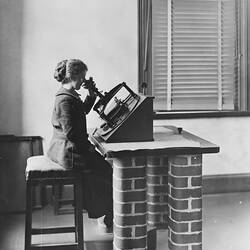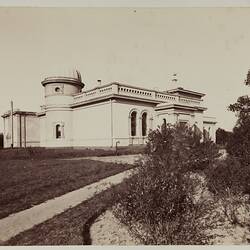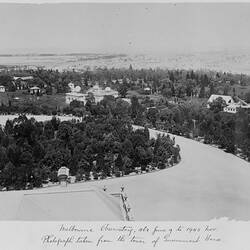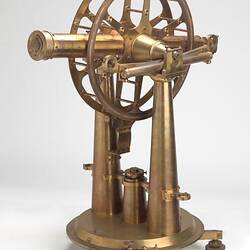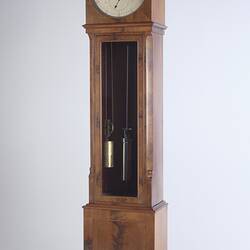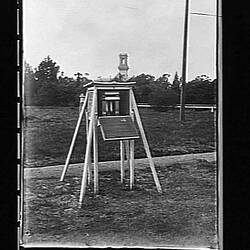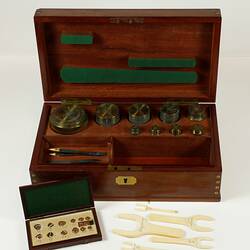Summary
Thomas de Colmar arithmometer, No. 1243, 1875. Capacity of 8 x 9 x16 figures. Calculating machine designed in 1820 by Charles X. Thomas de Colmar, and manufactured from the 1840s to 1920s. It was the first commercially successful calculating machine and could be used for addition, subtraction, division and mulitiplication.
This example used for astronomical and meteorological calculations at Melbourne Observatory.
Physical Description
Capacity of 8 x 9 x 16 figures. A lever sets the machine for "addition and multiplication" or "subtraction and division".
Significance
This arithmometer is of historical signficance for its association with Melbourne Observatory. It is not clear when Melbourne Observatory acquired the arithmometer; it may have been transferred from another government department. Museum Victoria holds arithmometers with closely related serial numbers 1145, 1242 and 1247. No 1242 [ST 026409] has an adjacent serial number to this object and was acquired from the Melbourne Mint; the two were probably purchased at the same time.
The arithmometer is of scientific significance for its likely use at Melbourne Observatory to reduce astronomical and geophysical measurements for research and publication, including publication of Melbourne star catalogues and geomagnetic measurements.
More Information
-
Collection Names
-
Collecting Areas
-
Acquisition Information
Donation from Melbourne Observatory
-
User
Melbourne Observatory, South Yarra, Greater Melbourne, Victoria, Australia, 1875
-
Maker
-
Classification
-
Category
-
Discipline
-
Type of item
-
Overall Dimensions
32 cm (Length), 68 cm (Width), 18 cm (Height)
-
Exhibition Collection Management
365 mm (Length), 585 mm (Width), 95 mm (Height)
above is with lid open. with lid closed - L185 x W585 x H105 mm
-
Keywords
